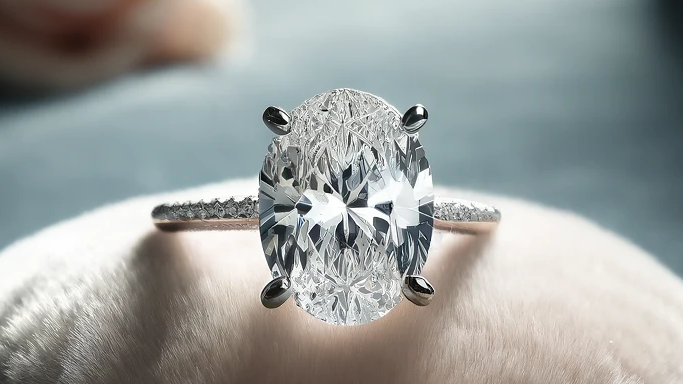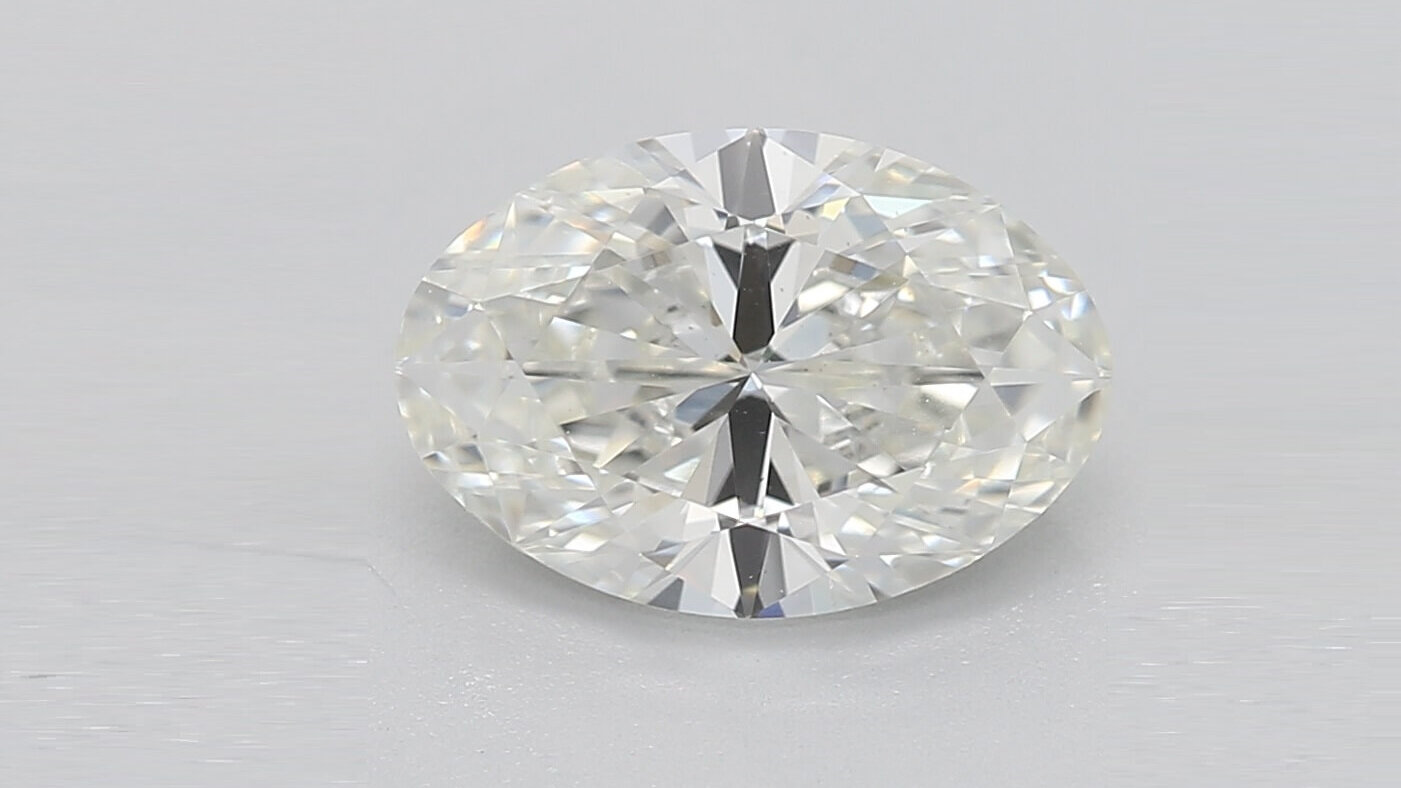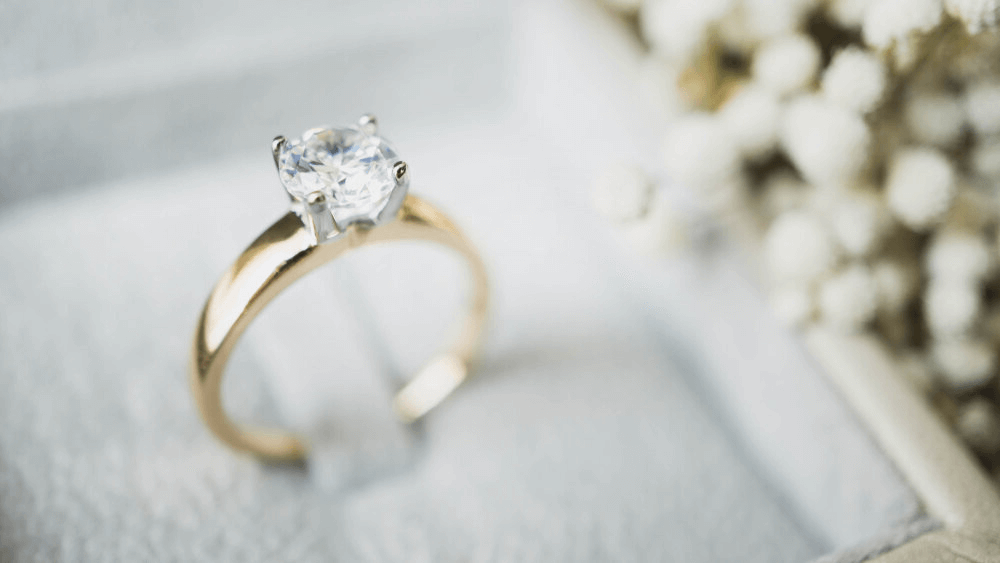Diamond Bow Tie Effect: What Jewelers Won’t Tell You

By Gary A.

Edited by Olivia H.
Published Mar 12, 2022
Edited on Dec 17, 2024
When it comes to choosing between diamond shapes like oval or marquise, understanding the subtle beauty and impact of the Diamond Bow Tie Effect can make all the difference in selecting the perfect stone.

- 6 Quick Tips for Buying a Diamond Engagement Ring: Examining Cut and Bow Tie Effect
- Introduction to the Bow Tie Effect
- Decoding the Bow Tie Phenomenon
- Evaluating Diamond Shapes
- How to Spot and Assess Bow Ties in Diamonds
- Choosing the Right Bow Tie Effect in an Oval Diamond
- Our Expert Take
- 7 FAQs
Before we dive deeper into the specifics, here are some practical tips to help guide your decision-making process:
6 Quick Tips for Buying a Diamond Engagement Ring: Examining Cut and Bow Tie Effect
- Tip 1: Inspect in Varied Lighting Evaluate the diamond under different lighting conditions, including natural daylight and indoor lighting. Observe how light interacts with the diamond and the persistence of any dark areas indicative of the bow tie effect.
- Tip 2: Focus on Symmetry and Proportion Especially for elongated shapes like ovals, symmetry and proportion greatly affect the bow tie effect. A balanced and uniform diamond shape reduces the likelihood of prominent bow ties.
- Tip 3: Utilize High-Quality Imagery When shopping online, prioritize vendors providing detailed imagery and 360-degree videos. These resources are essential for accurately assessing the bow tie effect, as grading reports often omit this detail.
- Tip 4: Compare Diamonds of Similar Grades Analyze diamonds side by side to note differences in the bow tie effect. This helps in selecting a diamond that visually appeals to you the most.
- Tip 5: Acknowledge Shape Specifics Understand that shapes like oval, pear, and marquise are more prone to the bow tie effect. A slight bow tie can enhance the diamond’s appearance, while a pronounced one may be undesirable.
- Tip 6: Prioritize Cut Quality The cut of the diamond is paramount in determining its overall beauty. A well-cut diamond, even with lower clarity or color grades, can surpass a poorly cut stone in brilliance.
Now that you’ve got these practical tips, use Jeweler AI below to find the perfect engagement ring that suits your style and budget:
Introduction to the Bow Tie Effect
If you’ve spent much time researching the Oval, Pear or Marquise diamond shapes, then there’s a strong chance you’ve come across the phrase ‘bow tie effect’ – and figured out that you’re going to want to avoid getting one in your diamond.
Bow ties are an issue for elongated cuts, and anyone in the market for one should be aware of that, although they bother some people more than others. That said, we have seen some extreme examples that would probably deter even the most laid-back shoppers, so being aware of what to look out for (and what to walk away from) is key.
Here’s what you need to know.

The Bow Tie Effect
In a diamond, a bow tie is characterized by a band of darkness running through the center of the stone. As you’ve probably guessed, their name stems from their resemblance to a black tie.
In extreme cases, a bow tie can totally ruin the beauty of the stone. Most people are surprised to learn how dark and disruptive these bow ties can be – and how much of the diamond’s distinctive pattern can be lost within this black hole, clearly visible through the middle of the crown and table.
Unfortunately, a black tie is most noticeable from the diamond’s face-up view of the stone, which is exactly how you, the ring’s wearer, and everyone else will be viewing the stone.
Decoding the Bow Tie Phenomenon
A bow tie is caused by a combination of issues with the diamond’s cut, and light blockage, causing areas of heavy shadow across the center of the stone.
It’s not simply a case of ‘bad cut = bow tie’, however, because the shapes themselves – the Oval, Marquise, Pear cut and, sometimes, the Radiant (when cut to rectangular proportions) – are part of the problem. In fact, most of the diamonds cut to these shapes will feature some sort of bow tie, even if it isn’t all that noticeable. Bow ties in oval diamonds (and other shapes, for that matter) can even enhance appearance, provided they’re very minor.
How Cut Impacts the Presence of Bow Ties
In any diamond shape, every single facet is there to aid in the diamond’s light performance – to help it take in light, refract it through the center of the stone, and emit it through the upper portion in flashes of white and colored light. When those facets are not positioned perfectly, dark spots (where the light isn’t able to reach) can occur within the diamond, making it impossible for certain areas within the stone to receive light.
Often, the issue is worse when you’re looking down into the diamond. As you block off some of the diamond’s light source, the errors in the facet structure are accentuated through the bow tie.
This risk is made significantly more likely in elongated shapes, which is why even the radiant can be affected by this phenomenon.
Evaluating Diamond Shapes
Shape means everything to bow ties. You’ll struggle to find an Oval diamond without a bow tie, but you’ll never come across an Emerald cut featuring the bow tie effect.
Round Brilliant Bow Ties
For the most part, Round Brilliant diamonds will not feature a bow tie.
This is a result of the proportions of the shape. The Round Brilliant is evenly proportioned (provided it has been cut well), just as a Cushion cut with a ratio of 1:1 features even proportions, too. This means that light naturally travels through every area of the diamond evenly and that the cutter does not have to plan against the risk of areas of reduced or blocked light.
Oval Diamond Bow Ties
Most Oval diamonds will feature some sort of black tie, although it’s often very minor, and simply adds dimension to the diamond, rather than blocking out a substantial (and clearly noticeable) section from the light. For this reason, you don’t need to be strict about limiting your search to finding an oval diamond with no bow tie – you just need to pick a seller who upholds high standards for choosing diamonds without bad bow ties.

Other Elongated Shapes
The same is true for Marquise and Pear diamonds – most of the diamonds you encounter will feature some sort of bow tie. You may have to look twice before you spot it; you may need the jeweler to point it out to you and find that your partner never seems to notice; you may see it instantly.
While most Cushion cuts follow square dimensions, some Cushions are rectangular. This can mean they also feature a slight bow tie.
Step Cuts
Step Cut diamonds like Emeralds and Asschers will never feature bow ties – their facet structures are totally different!
How to Spot and Assess Bow Ties in Diamonds
Whether or not a diamond features a bow tie is not listed within a GIA report.
Also, the complexity of bow ties means that it’s not always a risk eliminated by looking at only the best-cut diamonds. The only way to ensure that your diamond does not feature a detrimental bow tie is to look at it carefully in real life. It’s impossible to know for sure if you’ve only got a couple of photos and a video to go off.
Remember that every diamond is unique and that even the smallest differences will mean two diamonds of the same size and quality will react differently to light and obstructions. It would be very difficult to create a system for grading bow ties since they range from being barely noticeable to consuming the middle portion of the diamond.
As a shopper, looking out for a deal-breaking bow tie is simply part of the experience of choosing a diamond.
Choosing the Right Bow Tie Effect in an Oval Diamond
If you’re looking at one of the elongated fancy shapes, you’ll probably need to get used to the idea of a minor bow tie.
The bow tie may be as minor and insubstantial as a thin thread of shadow, or it may be disjointed enough to enhance the diamond’s light performance and scintillation. It may, however, totally destroy the impact of an otherwise beautiful diamond, and be bad enough to convince you to walk away without a second look.
It’s important to be aware of the fact that bow ties exist on a spectrum, rather than being ‘there or not’. Uneducated shoppers could easily fall into the trap of thinking that the dark band of shadow they see in their diamond is an unavoidable feature of certain shapes, so knowing how bad it can get – and how much of a bow tie you’re willing to put up with – is very important.
Looking out for bow ties is one of the most important steps in our 11-point Diamond Standards process, which we apply to every single diamond that makes its way onto our site, so shoppers don’t have to worry about winding up with a stone that’s lacking the brightness they’d expect from a beautiful diamond.
Avoiding Bad Bow Ties
Understanding the bow tie effect – what causes it, and which shapes it typically affects more than others – is the first step to ensuring you don’t walk home with a diamond afflicted by a nebulous black hole in its center.
But, as always, there’s more to it than that. Shoppers can have all the best intentions but, if they’re shopping from the wrong place – or in the wrong way – they’re vulnerable to making a major (and expensive) mistake.
Choosing the right source is essential. While we hold our diamonds to an incredibly high standard at WillYou, other sellers aren’t always so scrupulous.
Remember that, if you’re looking for an Oval, Pear, or Marquise, avoiding a bow tie altogether isn’t always an option. What you’re looking for is a diamond with a strong face-up appearance, a great light performance, and plenty of dimension. What you don’t want is a diamond broken up by totally inert, lifeless shadows that ruin its appearance.
Our Expert Take
Bow ties are one of the more complex issues that diamond cutters, jewelers, and shoppers need to consider. For the cutter, overcoming the issue of light blockage within elongated shapes is incredibly tricky, and there’s no ‘one way’ of doing it. For jewelers and shoppers, addressing the phenomenon isn’t as simple as looking for a particular grade for Cut or Clarity. Since most elongated diamonds are afflicted to some extent, it’s almost impossible to avoid it unless you stick to shapes with even ratios.
Keep in mind that every single diamond is unique, and that simply knowing the diamond you’re looking at features a bow tie isn’t a reason to put it down without a second thought.
Find a jeweler you can trust to steer you in the right direction and get used to the idea that your own analysis – even if you’ve never seen another diamond in real life before – holds a lot of value, too. If you think the diamond looks bad, don’t bother with it, but if you’re aware the diamond features a bow tie but still find yourself wondering what the big deal is, don’t be deterred.
7 FAQs
- Q: What Is the Bow Tie Effect in Diamonds?
- A: The bow tie effect is a visible shadow that resembles a bow tie, often seen in elongated diamond shapes like ovals, pears, and marquises. It’s caused by the diamond’s cut and the way light is reflected and blocked inside the stone.
- Q: Can the Bow Tie Effect Be Eliminated Completely?
- A: Completely eliminating the bow tie effect, especially in oval diamonds, is challenging. However, choosing a well-cut diamond can significantly reduce its visibility.
- Q: Does the Bow Tie Effect Affect a Diamond’s Value?
- A: Yes, a prominent bow tie can detract from a diamond’s beauty and potentially its value. However, a subtle bow tie is often considered a natural and acceptable aspect of elongated diamond shapes.
- Q: Are Certain Diamond Shapes More Prone to the Bow Tie Effect?
- A: Elongated shapes like oval, pear, and marquise diamonds are more prone to the bow tie effect compared to round or square cuts due to their facet structure and the way they reflect light.
- Q: How Can I Spot a Bow Tie When Buying a Diamond?
- A: Inspect the diamond under various lighting conditions and from different angles. Look for a dark area across the stone’s width. A bow tie should be subtle; an overly noticeable one can be a sign of poor cut quality.
- Q: Should a Bow Tie Be a Dealbreaker When Choosing a Diamond?
- A: Not necessarily. A minor bow tie can add character to a diamond. The decision should be based on personal preference and the overall beauty of the stone.
- Q: What’s the Best Way to Minimize the Bow Tie Effect?
- A: Prioritize the cut quality of the diamond. A well-cut diamond, even if elongated, can have a minimized bow tie effect. Additionally, use high-resolution images and videos for closer inspection, especially when buying online.
Choose Jeweler AI for a journey toward a perfect, bow-tie-free diamond.
FOLLOW-UP GUIDE SERIES












